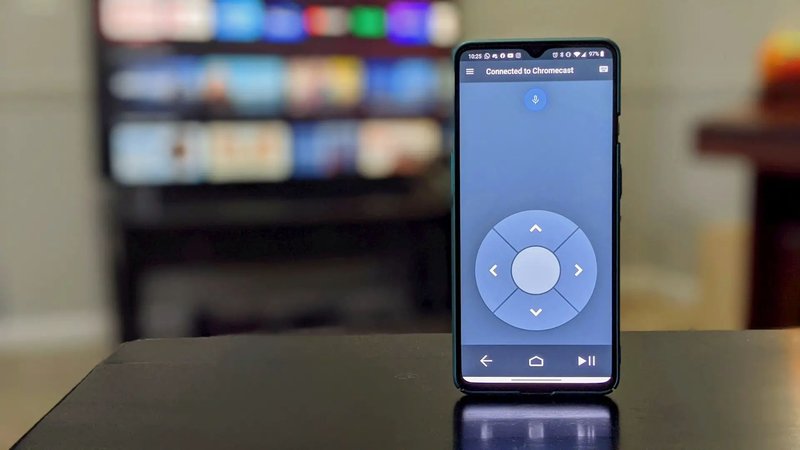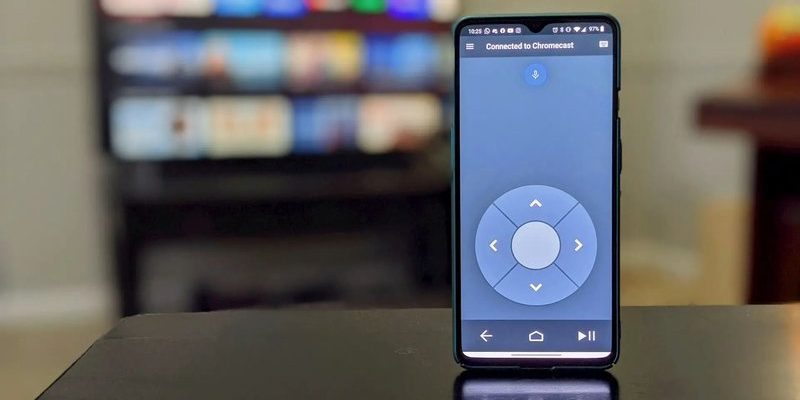
If you’re using a Chromecast streaming device—especially one of the newer models with their own dedicated Google TV remote—you’re definitely not alone in wondering if it’s possible to set everything up without a manual. Let’s be honest, those manuals are almost always MIA when you need them. So, can you actually program or pair your Chromecast remote without that little paper guide? Spoiler: yes, you can. But there are some quirks, a few steps you’ll need to know, and—luckily—a lot of room for error (and forgiveness). When it comes to tech, sometimes trial and error is part of the fun…ish.
Understanding How Chromecast Remotes Work
Let me explain a bit about what you’re dealing with before you start mashing buttons and hoping for the best. The Chromecast remote (usually called the Chromecast with Google TV remote) is designed to do more than just control Netflix or YouTube. It syncs with the Chromecast device itself and, in many cases, can even control your TV’s power and volume. Think of it as a universal remote-lite, but tailored for Google’s streaming gadgets.
What makes this remote different from your typical TV remote is that it’s built to communicate mostly via Bluetooth, not infrared. That means you don’t have to point it directly at the Chromecast—it can work even if you’re pointing off into space (though, let’s face it, most of us point anyway out of habit). There are still some features, like volume control, that use infrared to talk to your TV, which is why you might be asked to “pair” or “program” it for other devices.
If you’re used to remotes that come with thick manuals and complicated button presses just to sync, the Chromecast version is a breath of fresh air. Google wants it to be as plug-and-play as possible. But when you need to re-pair or code it—say you get a new TV, or you change out the batteries and something glitches—it can get a little murky, especially without the manual in hand.
Pairing Your Chromecast Remote Without the Manual
Here’s the thing: Google designed the Chromecast remote so that you don’t technically *need* the manual to pair it. Most of the process happens right on your screen, thanks to a super-guided setup. So, if you’ve just unboxed your Chromecast or reset your remote, the very first time you plug it in, your TV will walk you through the steps on-screen. No paper manual required.
If you need to manually pair the remote (maybe it got unpaired or you picked up a replacement), you’ll need to long-press the “Home” and “Back” buttons on your Chromecast remote at the same time, for about five seconds. Your Chromecast should recognize it and pop up a pairing prompt on your TV screen. It’s a bit like putting the remote into “find me” mode.
What if nothing happens? Well, sometimes the remote batteries are dead, or there’s some interference. Make sure to pop in fresh batteries before you try any pairing—honestly, it fixes more issues than you’d expect. If you’re still stuck, you can reset the remote by pulling the batteries out and waiting a few seconds before reinserting. That’s basically the remote control version of turning it off and on again.
Programming the Remote for Your TV’s Power and Volume
So you’ve got your Chromecast remote paired, but what about controlling your TV volume or powering it on/off? This is where “programming” comes in, and it’s a step that tends to stump people—especially if the manual is nowhere in sight.
During the initial Chromecast setup, your TV will usually ask if you want to configure your remote to control things like volume and power. If you skip it, or if you get a new TV, you can always go back. Here’s the not-so-secret backdoor:
- Go to “Settings” on Google TV (look for the gear icon in the top right corner).
- Select “Remotes & Accessories.”
- Pick your Chromecast remote from the list.
- Choose “Set up remote buttons.”
- Follow the on-screen prompts. Usually, it’ll ask you to test the volume and power buttons—just follow along!
If it doesn’t work for your specific TV right away, don’t panic. Sometimes you’ll have to try a few codes (the Chromecast will automatically cycle through common ones for your TV brand). This is way less painful than sifting through a long list of remote codes in a printed manual.
By the way, if all else fails, you can use your phone as a backup remote with the Google Home app. Seriously, it’s saved me when remotes have gone MIA or needed a battery recharge.
Troubleshooting Common Chromecast Remote Issues
Alright, let’s talk about the hiccups—because tech rarely works perfectly the first time, right? One of the biggest issues people hit is the remote not responding after changing batteries, or after a power outage. If your Chromecast remote suddenly stops working, try these steps:
- Double-check the batteries. Fresh ones, please. Old or mismatched batteries can make the remote act flaky.
- If your remote still won’t pair, hold down the “Home” button for 15 seconds to soft-reset it.
- Sometimes, rebooting the actual Chromecast stick (just unplug it and plug it back in) clears up any weird software bugs.
- If the volume or power buttons don’t work, run through the “Set up remote buttons” process in settings again—sometimes the TV code didn’t quite sync the first time.
You’d be amazed how often a simple battery swap or a quick reboot works wonders. Still, if you’re getting nowhere, using your phone or a universal remote as a stopgap can save movie night.
Pro tip: If you’ve got a sneaky pet (or toddler) who loves to hide remotes, label yours, or set up a backup with your phone. Seriously, I once found my remote in the freezer—no clue how it got there.
Comparing Chromecast Remotes vs. Universal Remotes
You might be wondering, “Isn’t it just easier to use a universal remote?” That’s a fair question. Here’s the deal: Chromecast remotes are *optimized* for Google TV and streaming, but universal remotes can control a zillion devices at once (TVs, soundbars, Blu-ray players, and yes, even your Chromecast).
The catch? Universal remotes often require complicated “codes” and a lot of button holding to get everything synced. You’ll be living in button-pushing limbo if you lose their manual, believe me.
Chromecast remotes, meanwhile, are minimalist. They can do fewer things, but what they do, they do well—and the on-screen setup is leagues easier. Unless you’ve got a wild setup with tons of components, sticking with the Chromecast remote (and maybe your phone as a secondary) is usually less headache.
When Should You Reset or Replace Your Chromecast Remote?
Not every remote can be saved—sometimes the hardware just gives out. If you’ve tried fresh batteries, reset steps, and the Chromecast still ignores your remote, you might need a replacement. Chromecast remotes can be purchased separately and re-paired using the steps above (again, no manual necessary).
As for a full *reset* of your Chromecast device, this should be used sparingly—like when nothing else works, or if you’re selling or giving away your device. To reset, hold the button on your Chromecast (the device, not the remote) until the LED light flashes. Keep in mind you’ll have to run through the whole setup again after that.
Insider confession: I’ve gone through two remotes thanks to coffee spills and a fateful encounter with a golden retriever. Bottom line: sometimes the “hardware problem” is just, well, life happening.
Keeping Your Chromecast Remote Working Smoothly
It sounds silly, but little things really do help your Chromecast remote last longer and act less buggy. For example, keep it away from direct sunlight (UV rays can mess with plastic), avoid dropping it (easier said than done), and change the batteries every 6–12 months even if you think they’re “probably okay.” Weak batteries make the Bluetooth connection flaky, leading to weird lag or missed presses.
If your remote gets laggy or spotty, a quick battery swap and a short reset usually brings it back to life. And don’t be shy about using the Google Home app as a backup—having another way to control your streaming can be a total lifesaver.
Wrapping Up: Do You Really Need the Manual?
So, after all is said and done, can you program Chromecast streaming device remotes without a manual? Absolutely—you don’t need to dig through junk drawers or panic-order replacements for a lost booklet. Chromecast remotes were built with beginners in mind, and most of the setup is handled right on your TV screen or through the settings menu. Whether you’re syncing, resetting, or troubleshooting, Google’s kept things streamlined.
Just remember: fresh batteries, a little patience, and a willingness to poke around in the settings menu will get you further than any paper guide ever could. And hey, if all else fails, there’s always your phone, universal remotes, or a good old-fashioned walk to the TV. But let’s hope it doesn’t come to that!
Streaming should be fun—not a technical headache. So, here’s to more movie nights and less remote confusion. If you ever do find your manual, maybe keep it around… but honestly, you probably won’t need it again.
